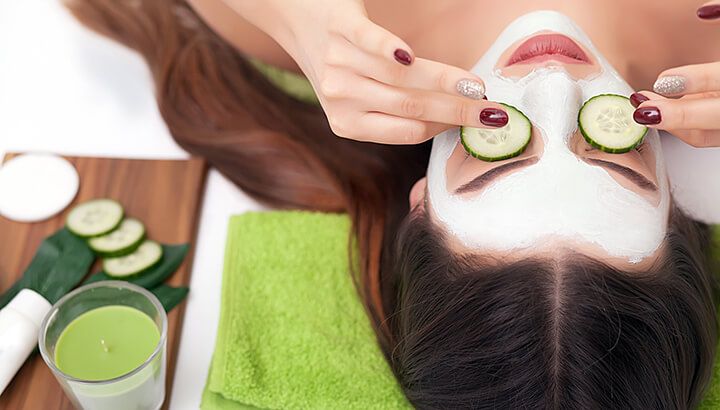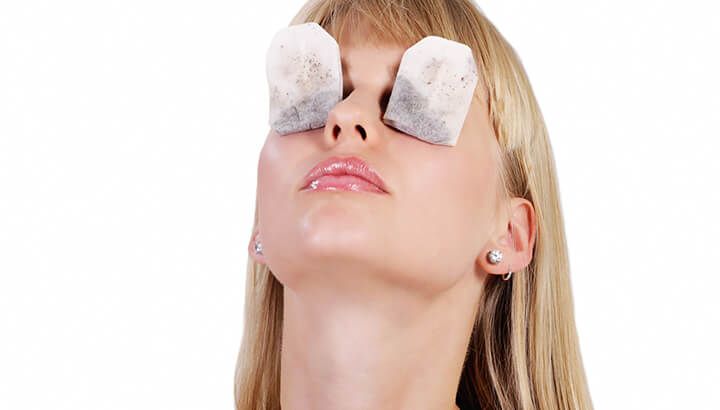
Do your eyes need a little TLC? Whether it’s for better sleep or better skin around the eyes, there are some things you should put on (or in) your eyes and some things you absolutely shouldn’t. Here are a few to remember.
DO: Sleep mask
As a nation, we’re more than a little exhausted. At least 60 million Americans have insomnia, and our modern, stressful lifestyles aren’t helping. If you need to mix-up your evening routine for better sleep, try a sleep mask.
In one study, researchers studied the effects of ICU light and sound stimuli on patients and the quality of their sleep. They found that sleep masks and earplugs provided a marked increase in rapid eye movement (REM) sleep and melatonin levels. Melatonin is a biggie — it’s that brain hormone that regulates your sleep cycle and gives your body the hint that it’s time to catch some zzz’s. If you’re having trouble falling asleep, a sleep mask is a quick and easy way to shut out light and distractions. That, paired with high-quality melatonin supplements, may send you off to dreamland in no time.
DON’T: Essential oils
Some sources say that one or two drops of lavender essential oil added into mascara can promote eyelash growth. That may work for some people, but we think that is cutting it a bit too close. Essential oils of any kind should never, ever go into the eyes themselves — they are far too concentrated.
If you’re interested, there are less risky ways to use essential oils around the eyes. Lavender, chamomile and rosemary essential oils mixed in with a carrier oil may be soothing for puffy bags under the eyes. And if you need a little help in the relaxation department, lavender can be added to this homemade eye pillow so you can get a good night’s sleep.
DO: Cucumbers

It’s not just a fad, cucumbers really do provide benefits for the skin around the eyes. Research shows that slices of cucumber can do the following:
- Provide a cooling effect
- Hydrate surrounding tissue
- Reduce dark circles (thanks to vitamin K)
- Reduce inflammation (from the lignans)
In addition, cucumbers can be used to treat wrinkles and sunburns. Not bad for a veggie made up of 95 percent water! Remember to always use organic cucumbers to avoid pesticide residue. Then sit back, enjoy and let the cucumbers do the rest of the work.
DON’T: Facial Moisturizer
With their alcohol content and fragrances, facial moisturizers can be irritating to the sensitive skin around the eyes. In fact, if you use more than just a small dab, you may notice redness, wrinkles, irritation and a rash. Since the skin near the eyes is warmer than the rest of the face, products disperse over the skin more easily. Before you know it, you may very well end up with toxic chemicals in your eyes. Ouch!
Aside from the shocking amount of harmful chemicals and preservatives contained in conventional beauty products, they are also tested on animals, which is downright ugly. If you’re in need of a facial moisturizer that’s safe for the eyes, and free of chemicals and animal cruelty, try coconut oil instead.
DO: Coconut oil

We already touched on coconut oil briefly, but it deserves its own section for the sheer amount of ways you can use it on the eyes. You can rub it directly into your skin for some much-needed nourishment, you can mix it up with essential oils to combat puffiness and you can use it on your eyelids to remove makeup. Best of all, you can use it as a natural eye lubricant.
If you have dry, itchy eyes, try this remedy:
- Liquify coconut oil by putting the jar into a bowl of warm water (don’t use a microwave).
- Let it cool for several minutes.
- Use a small glass dropper to collect coconut oil from the bowl.
- Tip your head back and put a few drops into each eye.
At first, you may experience cloudy vision, but it should clear up within a few minutes. You can try this twice a day, morning and night, to decrease dryness.
DON’T: Old mascara
Your eyelashes naturally have bacteria on them, and each time you put mascara on your eyelashes, you’re dunking those bacteria back into your mascara container. After one use, it’s not a problem. But as the months go by, the bacteria are more likely to build up and cause an infection. Old and contaminated makeup can cause redness, irritation, serious eye infections or even blindness in rare cases.
Can’t remember the last time you purchased mascara? Then it’s probably time to toss your current supply. You can reduce your risk of infection by throwing away your eye makeup every three to four months. In addition, never use makeup that may contain dirt or other contaminants — it’s just not worth it for your beautiful eyes! If you want longer lashes, try this homemade lash lengthening serum instead of mascara.
DO: Tea bags

Turns out, tea is great for you and great on you, as well. Green and black tea bags placed under the eyes may help to reduce puffiness, thanks to the caffeine content. In one study, researchers found that an eye pad with caffeine and vitamin K reduced wrinkles and dark circles on participants after just one month. This is because caffeine shrinks blood vessels, and the skin around the eyes is no exception. Fans of tea treatment also say that chamomile has soothing properties for the skin as well. Here’s how to try putting tea bags on your eyes:
- Steep two tea bags in hot water for five minutes.
- Put tea bags on a clean plate, then put them in the refrigerator for 20 minutes.
- Squeeze out any excess liquid from the tea bags.
- Lay down and put the tea bags over your eyes for 20 to 30 minutes.
Have any natural eye remedies you’d like to share? Let us know in the comments below!
— The Alternative Daily

